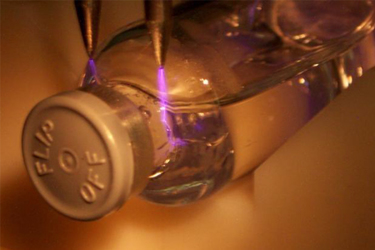An Introduction To High Voltage Leak Detection (HVLD) Technology
By Brian Ball

It is understood that no matter how carefully a product has been prepared, it would still be unsafe for human use if the container has a pinhole, a crack, or a defective seal. Containers are commonly kept in an environment of varying temperature. When it is warm, the solution or product may expand and may leak from the container through a pinhole, a crack, or a defective seal, and when it is cold the product can shrink back into the container bringing with it such contaminants as bacteria from the exterior of the container, thus contaminating the product.
There are a variety of methods widely used in the detection of pinholes, cracks, and defective seals in containers. These tests range from vacuum or pressure decay tests to submerging the entire container into a dye solution under pressure and visually inspecting the container for the presents of dye or more advanced vision systems to inspect for certain defects in the container. Many of these tests are destructive causing the loss of good product and packaging components.
Read more to learn why the High Voltage Leak Detection (HVLD) system is totally free from these shortcomings and has additional advantages for ensuring seal integrity.
Get unlimited access to:
Enter your credentials below to log in. Not yet a member of Pharmaceutical Online? Subscribe today.
